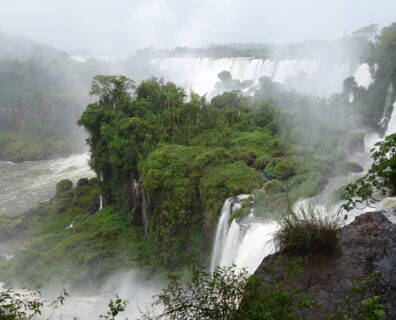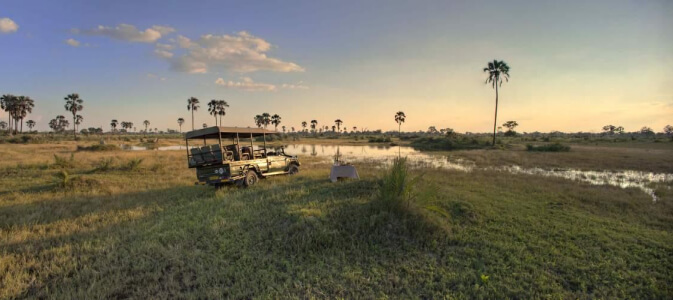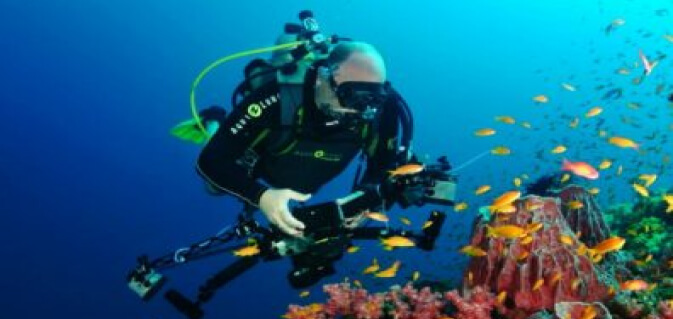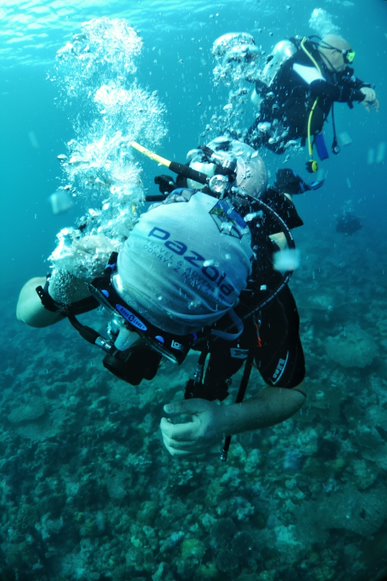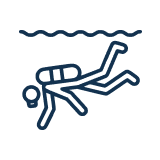Safari nurkowe Maledivy 2021 Przygoda życia!
bo widziałem rekiny wielorybie, manty ,żółwie,mureny,białe plaże,
turkusowy ocean,
Michał S. Zadbał o świetną atmosferę w grupie, wiecznie uśmiechnięty, życzliwy, zawsze pomocny ,pod wodą robi świetne zdjęcia, lata dronem no i organizuje zajęcia okołonurkowe
Wybieram się z Pazola Travel na Filipiny. Mam nadzieję już w przyszłym roku.
Tomasz Tomasz
Wyjazd na koniec swiata , jak do raju !! polączony z wysmienita atmosfera kreowana przez wielebnego Pszczole !!!! Wszystko zapiete na ostatni guzik , podane na tacy i posprzatane !!!Polecam wszystkim jak lekarstwa , wrocicie zrelaxowani , odmienieni , gotowi do nowych wyzwan !!! Po takim wyjezdzie swiat wyglada i smakuje inaczej ….YOLO
Boj Gargamel
Pierwszy raz z Pazola Travel i jestem pod dużym wrażeniem profesjonalnego podejścia do klienta. Od błyskawicznego kontaktu i merytorycznej odpowiedzi na nawet „najgłupsze” pytania, po bezbłędną organizacje i elastyczne podejście do potrzeb klientów jak również sprawne rozwiązywanie powstałych problemów. Dodatkowo po prawie 20 latach przerwy dzięki przygodzie z Pazola wróciłem do grona „zapalonych” nurków!!!! Również poprzez kolaborację z #GorącaTeam jest możliwość skorzystania z profesjonalnego treningu personalnego wzmacniającego naszą kondycję. Kolejne wyjazdy już w planach. Goraco polecam :).
Pawel Mozdzen
Jak mawiał Arystoteles tylko ten kto wędruje odnajduje nowe ścieżki. Wyprawa z Pazola Travel na Seszele była dla mnie odkryciem takiej nowej ścieżki. Umożliwiła mi zachwycić się przepięknymi krajobrazami, odpocząć w gronie przemiłych ludzi i zapomnieć przez moment o zgiełku dnia codziennego. Świetna organizacja, przepyszne jedzenie, profesjonalny przewodnik Piotr i egzotyka cóż trzeba więcej aby wypocząć? Dziękuję za wspaniałe przeżycia, których wspomnienie rozświetlą na pewno niejeden zimowy poranek w Polsce.
Dagmara Dominik
Z Pazola Travel wybrałam się na Seszele. To była moja pierwsza tak daleka podróż i ciesze się, że właśnie z Pazola. Przeżyłam wspaniałą przygodę. Nigdy tego nie zapomnę. Seszele są przepiękne i bardzo chciałabym tam jeszcze kiedyś wrócić. Piotr Pazola zrobił na mnie ogromne wrażenie jako organizator. Każdy dzień przez niego organizowany jest pełen wrazen i najróżniejszych atrakcji.Jako osoba nieznająca angielskiego czułam się bardzo bezpieczna i zaopiekowana. Wyprawy z Pazola nie należą może do najtańszych, ale uwierzcie mi, że były warte każdej wydanej złotówki. Super wczasy. Polecam to biuro każdemu. Ja jestem zachwycona. Niedługo wybieram się z nimi na safari na Malediwach. Kto wie…może nauczę się nurkowac:)
Malgorzata N
Właśnie wróciłem z wyprawy na Filipiny.
Orgnizacja i współpraca z organizatorem pierwsza klasa 😉
Hotele nowe ładnie i czyste. Standard bardzo wysoki. Lokalni przewodnicy pomocni i uprzejmi. Prowadzacy Pszczoła wesoły i przemiły kompan 😉
POLECAM !
Borys Iwanow
Wyjazd nurkowy na Filipiny należy zaliczyć do baaardzo udanych. Wspaniałe miejsca, zgrana grupa i przemiła atmosfera. Wyjazd z Pazola Travel spełnił moje oczekiwania – wszystko dopięte na ostatni guzik!! A w wodzie…w wodzie po prostu duuuuza ryba – obiecane kosogony, rekin wielorybi i siedlisko whitetipow…super!:)
Waldek Lis
Filipiny z Pazolą- rewelacyjna przygoda, super widoki i niesamowite nurki. Ponadto, dobra organizacja i przyjazna aura lokalsów sprawiły, że cudowne wspomnienia zostaną na długo. Polecam
Marzena Biz
Bardzo polecam
Korzystałam już wielokrotnie z biura, zawsze jestem bardzo zadowolona.
Wycieczki zorganizowane na świetnym poziomie, cudowne nurki, małe grupy
Mam nadzieję, że w krotce znowu będę mogła skorzystać.
Monika Szerszeń
Array
(
[opinia_0] => Array
(
[opinia_aktywna] => 1
[opinia_tresc_0] =>
Safari nurkowe Maledivy 2021 Przygoda życia!
bo widziałem rekiny wielorybie, manty ,żółwie,mureny,białe plaże,
turkusowy ocean,
Michał S. Zadbał o świetną atmosferę w grupie, wiecznie uśmiechnięty, życzliwy, zawsze pomocny ,pod wodą robi świetne zdjęcia, lata dronem no i organizuje zajęcia okołonurkowe
Wybieram się z Pazola Travel na Filipiny. Mam nadzieję już w przyszłym roku.
[opinia_autor_0] => Tomasz Tomasz
)
[opinia_1] => Array
(
[opinia_aktywna] => 1
[opinia_tresc_1] =>
Wyjazd na koniec swiata , jak do raju !! polączony z wysmienita atmosfera kreowana przez wielebnego Pszczole !!!! Wszystko zapiete na ostatni guzik , podane na tacy i posprzatane !!!Polecam wszystkim jak lekarstwa , wrocicie zrelaxowani , odmienieni , gotowi do nowych wyzwan !!! Po takim wyjezdzie swiat wyglada i smakuje inaczej ….YOLO
[opinia_autor_1] => Boj Gargamel
)
[opinia_2] => Array
(
[opinia_aktywna] => 1
[opinia_tresc_2] =>
Pierwszy raz z Pazola Travel i jestem pod dużym wrażeniem profesjonalnego podejścia do klienta. Od błyskawicznego kontaktu i merytorycznej odpowiedzi na nawet „najgłupsze” pytania, po bezbłędną organizacje i elastyczne podejście do potrzeb klientów jak również sprawne rozwiązywanie powstałych problemów. Dodatkowo po prawie 20 latach przerwy dzięki przygodzie z Pazola wróciłem do grona „zapalonych” nurków!!!! Również poprzez kolaborację z #GorącaTeam jest możliwość skorzystania z profesjonalnego treningu personalnego wzmacniającego naszą kondycję. Kolejne wyjazdy już w planach. Goraco polecam :).
[opinia_autor_2] => Pawel Mozdzen
)
[opinia_3] => Array
(
[opinia_aktywna] => 1
[opinia_tresc_3] =>
Jak mawiał Arystoteles tylko ten kto wędruje odnajduje nowe ścieżki. Wyprawa z Pazola Travel na Seszele była dla mnie odkryciem takiej nowej ścieżki. Umożliwiła mi zachwycić się przepięknymi krajobrazami, odpocząć w gronie przemiłych ludzi i zapomnieć przez moment o zgiełku dnia codziennego. Świetna organizacja, przepyszne jedzenie, profesjonalny przewodnik Piotr i egzotyka cóż trzeba więcej aby wypocząć? Dziękuję za wspaniałe przeżycia, których wspomnienie rozświetlą na pewno niejeden zimowy poranek w Polsce.
[opinia_autor_3] => Dagmara Dominik
)
[opinia_4] => Array
(
[opinia_aktywna] => 1
[opinia_tresc_4] =>
Z Pazola Travel wybrałam się na Seszele. To była moja pierwsza tak daleka podróż i ciesze się, że właśnie z Pazola. Przeżyłam wspaniałą przygodę. Nigdy tego nie zapomnę. Seszele są przepiękne i bardzo chciałabym tam jeszcze kiedyś wrócić. Piotr Pazola zrobił na mnie ogromne wrażenie jako organizator. Każdy dzień przez niego organizowany jest pełen wrazen i najróżniejszych atrakcji.Jako osoba nieznająca angielskiego czułam się bardzo bezpieczna i zaopiekowana. Wyprawy z Pazola nie należą może do najtańszych, ale uwierzcie mi, że były warte każdej wydanej złotówki. Super wczasy. Polecam to biuro każdemu. Ja jestem zachwycona. Niedługo wybieram się z nimi na safari na Malediwach. Kto wie…może nauczę się nurkowac:)
[opinia_autor_4] => Malgorzata N
)
[opinia_5] => Array
(
[opinia_aktywna] => 1
[opinia_tresc_5] =>
Właśnie wróciłem z wyprawy na Filipiny.
Orgnizacja i współpraca z organizatorem pierwsza klasa 😉
Hotele nowe ładnie i czyste. Standard bardzo wysoki. Lokalni przewodnicy pomocni i uprzejmi. Prowadzacy Pszczoła wesoły i przemiły kompan 😉
POLECAM !
[opinia_autor_5] => Borys Iwanow
)
[opinia_6] => Array
(
[opinia_aktywna] => 1
[opinia_tresc_6] =>
Wyjazd nurkowy na Filipiny należy zaliczyć do baaardzo udanych. Wspaniałe miejsca, zgrana grupa i przemiła atmosfera. Wyjazd z Pazola Travel spełnił moje oczekiwania – wszystko dopięte na ostatni guzik!! A w wodzie…w wodzie po prostu duuuuza ryba – obiecane kosogony, rekin wielorybi i siedlisko whitetipow…super!:)
[opinia_autor_6] => Waldek Lis
)
[opinia_7] => Array
(
[opinia_aktywna] => 1
[opinia_tresc_7] =>
Filipiny z Pazolą- rewelacyjna przygoda, super widoki i niesamowite nurki. Ponadto, dobra organizacja i przyjazna aura lokalsów sprawiły, że cudowne wspomnienia zostaną na długo. Polecam
[opinia_autor_7] => Marzena Biz
)
[opinia_8] => Array
(
[opinia_aktywna] => 1
[opinia_tresc_8] =>
Bardzo polecam
Korzystałam już wielokrotnie z biura, zawsze jestem bardzo zadowolona.
Wycieczki zorganizowane na świetnym poziomie, cudowne nurki, małe grupy
Mam nadzieję, że w krotce znowu będę mogła skorzystać.
[opinia_autor_8] => Monika Szerszeń
)
)
